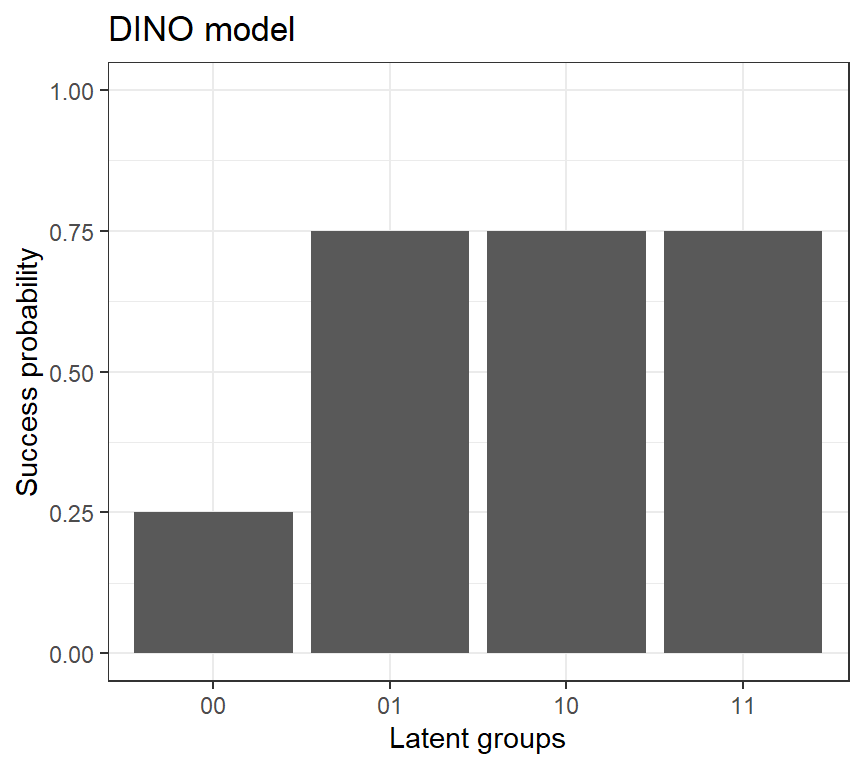3.6 The DINO model
Stands for the deterministic input, noisy “or” gate model (Templin & Henson, 2006)
Item j splits the examinees in the different latent classes into two groups:
those who have at least one of the required attributes
those who have none of the required attributes
The IRF of the DINA model can be written by
The DINO model has only two parameters per item regardless of the number of attributes :
guessing parameter
slip parameter
Please find the parameters from the plot below:

References
Templin, J. L., & Henson, R. A. (2006). Measurement of psychological disorders using cognitive diagnosis models. Psychological Methods, 11(3), 287–305. https://doi.org/10.1037/1082-989X.11.3.287